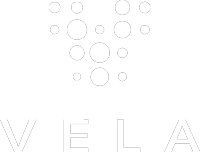This is a guest post by launch photographer Walter Scriptunas II, of Scriptunas Images. All photos are copyright Walter Scriptunas II.
If you are a member of the media and have access to one of the highly restricted launch sites around the world for placing a remote camera, the best way to trigger your camera is by the intense sound created by a rocket at liftoff.
I am often asked how I set up my remote cameras and what settings I use for varying light conditions and different rocket types. The following is a crash course for setting up your next remote camera!
For a typical launch, photographers are given access to the launch pad to set up cameras the day before launch. On some occasions however, such as for an evening launch, photographers may be allowed to set up cameras the morning of launch. Please note that having a camera this close to the launch can occasionally bring harm to the equipment, including lens pitting, water damage or complete destruction, though this is rare.
Protecting your camera
Weather Protection
It is important to keep your camera protected from both the weather and the harsh launch environment. For this I use a simple trash bag wrapped around my camera and trigger, others use custom boxes, but in order for me to set up more cameras in a timely fashion I prefer the bags.
Staking it down
I cannot stress enough the importance of properly securing camera equipment around the launch pad. Depending on where your camera is placed, the blast from the rocket can easily knock over your setup. Other factors include strong winds from weather passing through. I use stakes which can be found at your local hardware store, they are hammered into the ground and secured to the tripod legs with zip ties.
Triggering the camera
Up until about four years ago, there were very few commercially made sound triggers on the market, most photographers would have to build their own, which can take a considerable amount of time and money. Recently, triggers have started to pop up by various manufacturers. Cameras can often sit at the launch pad for several days if a launch is scrubbed, making good battery life extremely important if you want the shot! The Vela Pop is a perfect option for launch photographers and its value, size, battery life and reliability make it a no brainer.
Connecting the trigger
Most sound triggers have a threshold adjustment. This should be set to a high volume to prevent the trigger being prematurely activated by wind or other noises. The trigger connects to the camera's remote trigger socket, using a cable that varies according to the camera make and model. It's a good idea to strap the trigger to your box or tripod.
Camera Settings
For mid-morning and afternoon launches, I will almost always use manual settings, for example, ISO 200, F8, 1/1000. If a launch is at night, near sunrise or sunset or has the possibility of being overcast, I will use aperture priority due to the constantly changing lighting conditions, typically ISO 200, f8, -2 e/v.
Post launch safety
A rocket launch, especially ones with solid rocket boosters, can leave your setup covered in various substances, some that can cause skin irritation. With this is mind, be sure to throw away used bags and clean your equipment as needed following launch.





